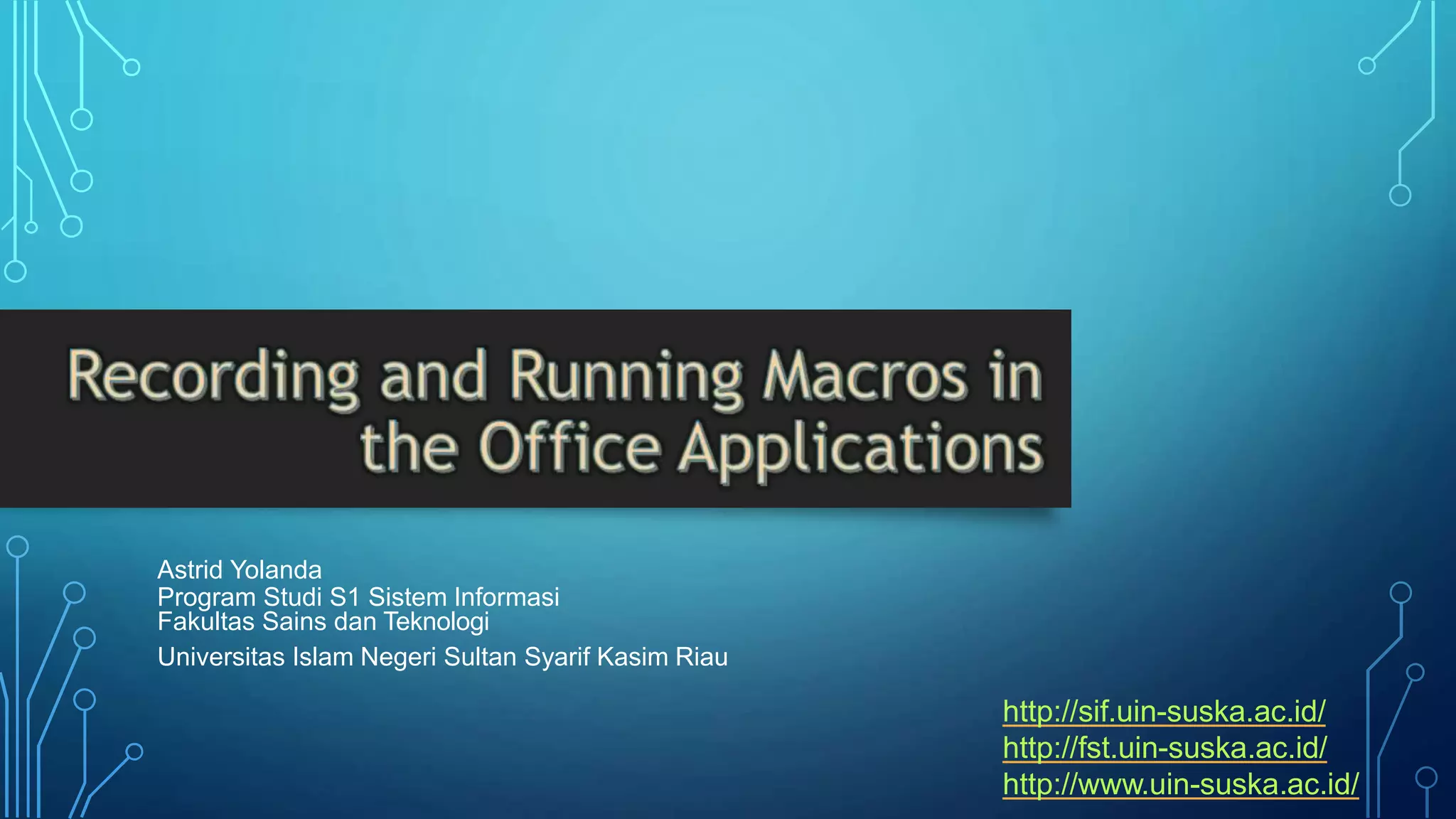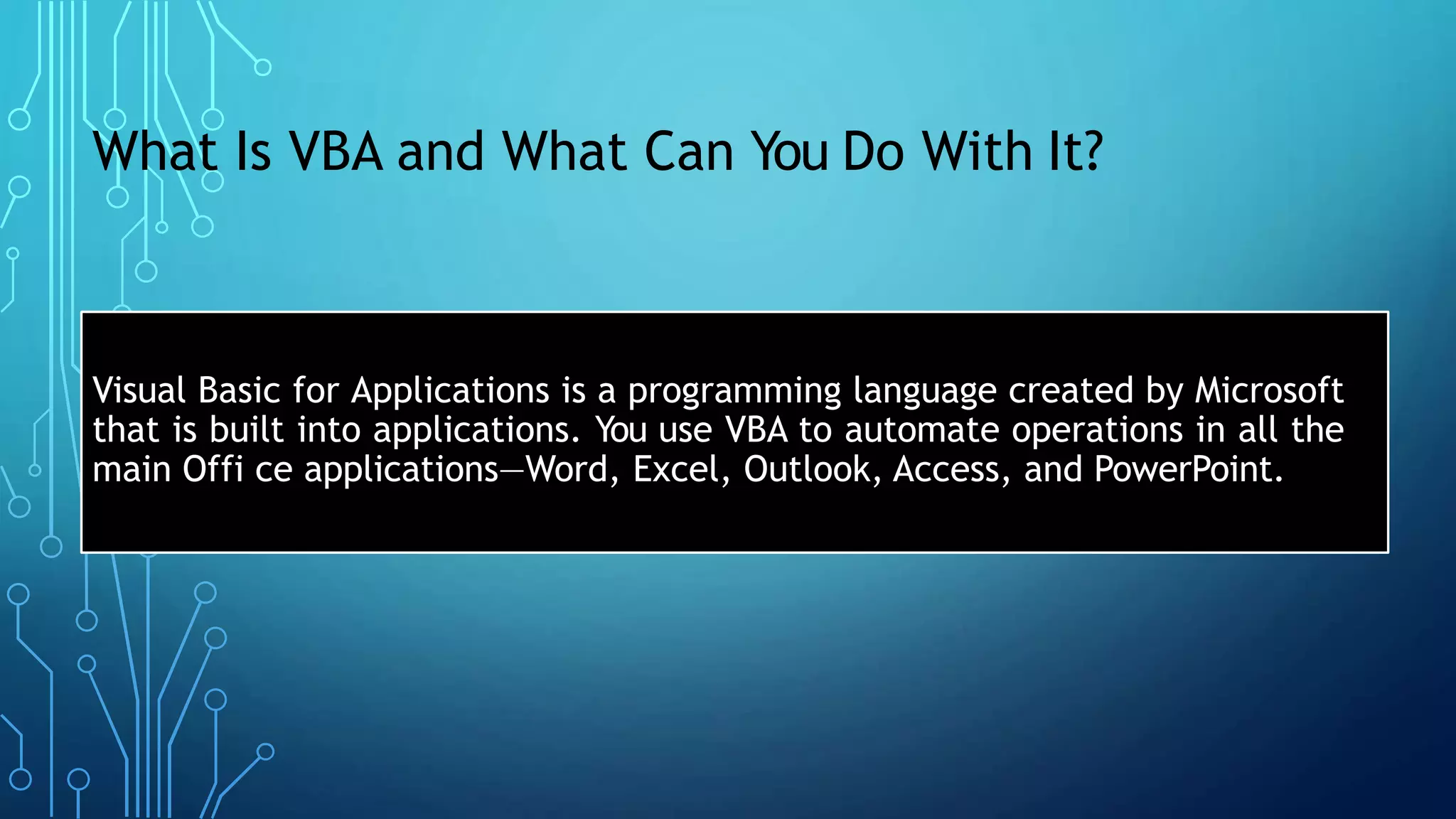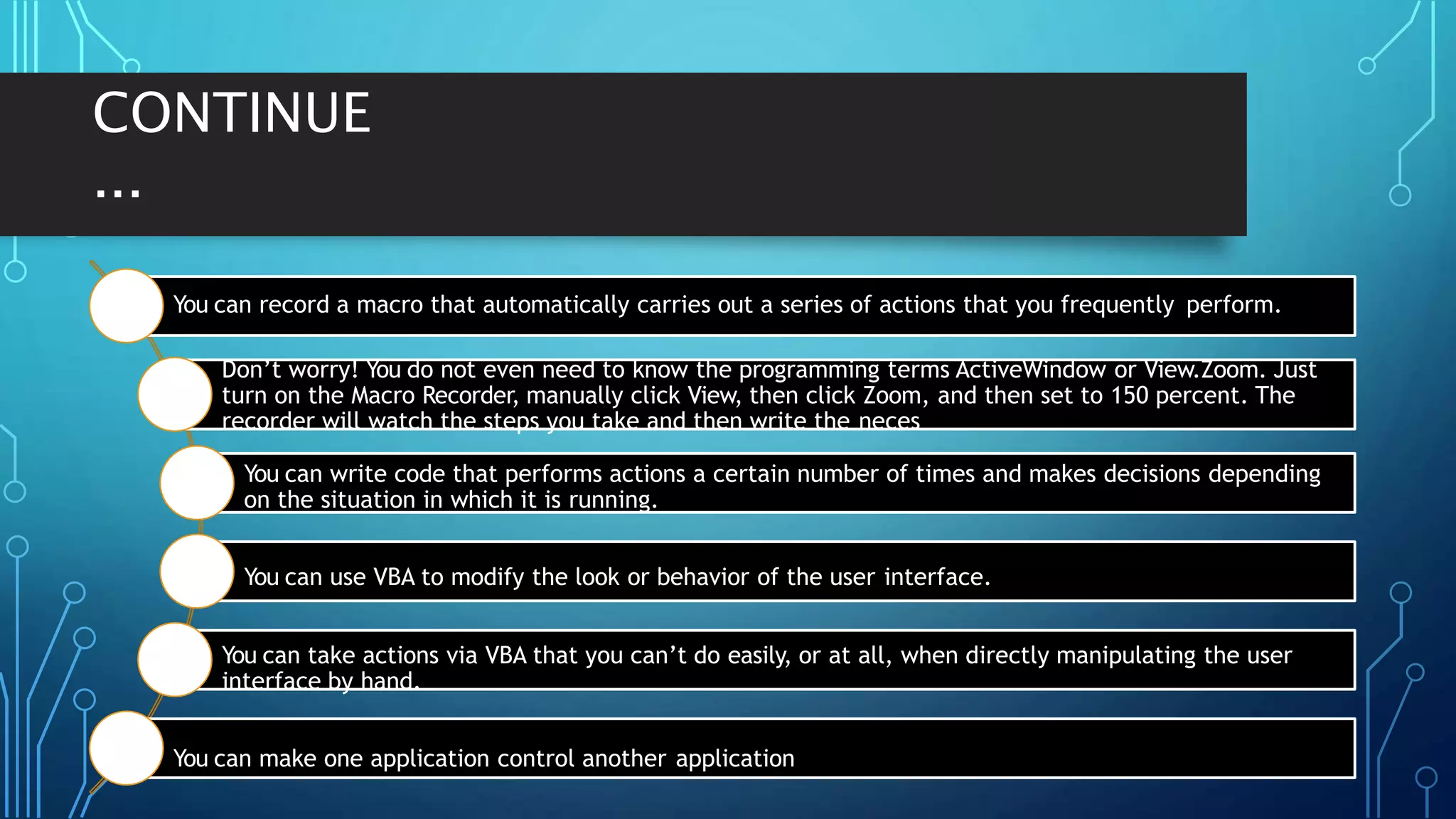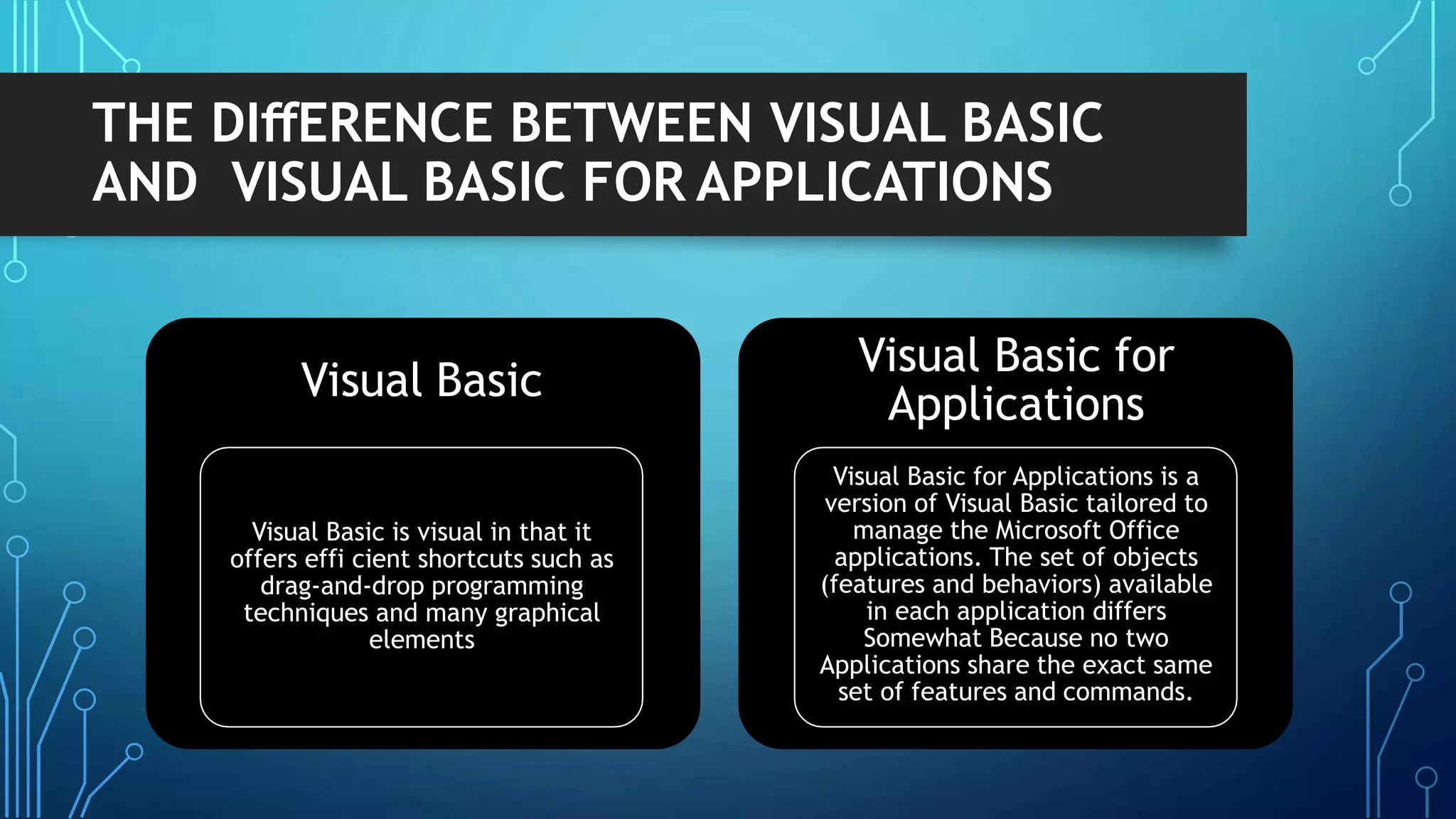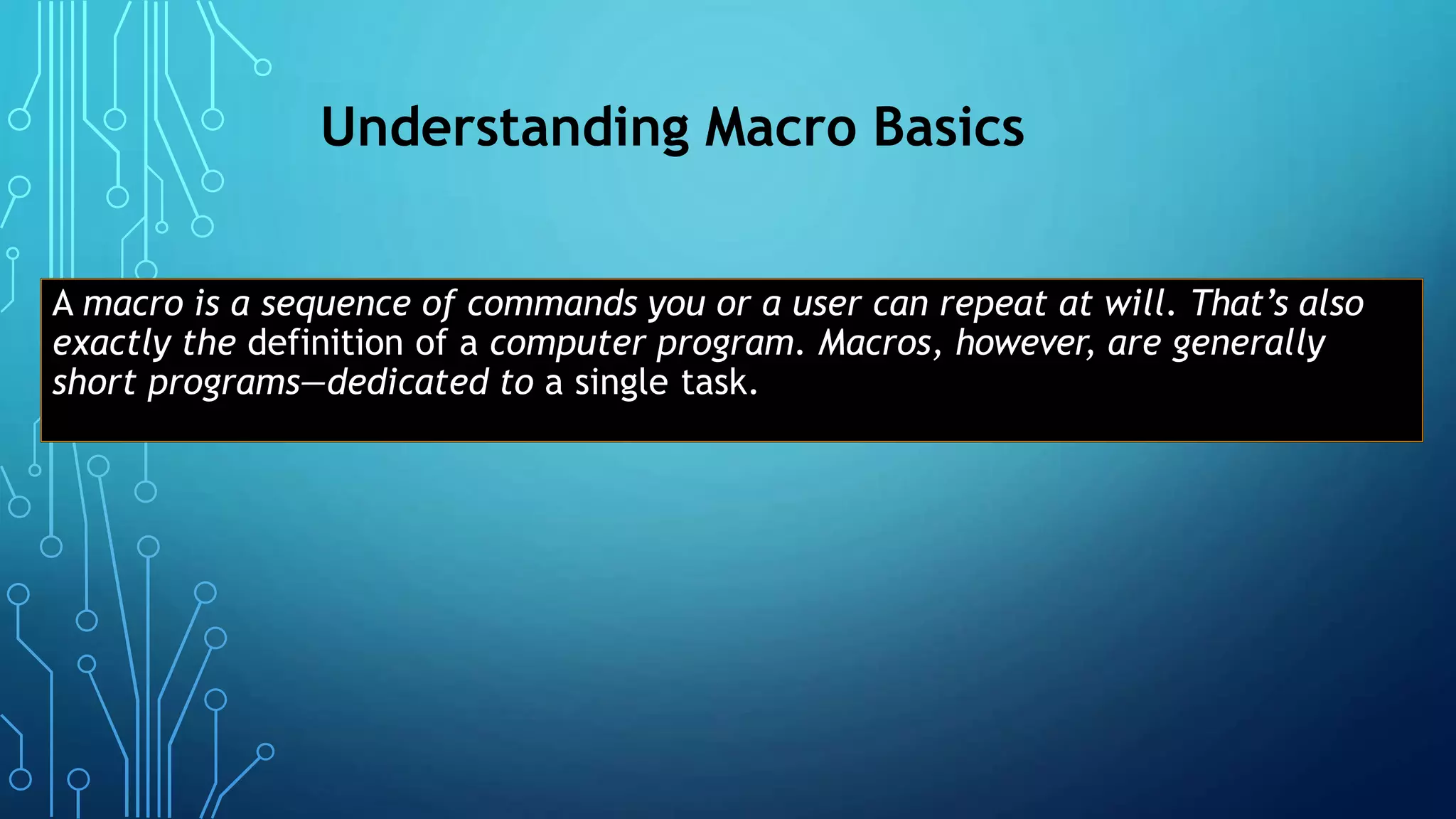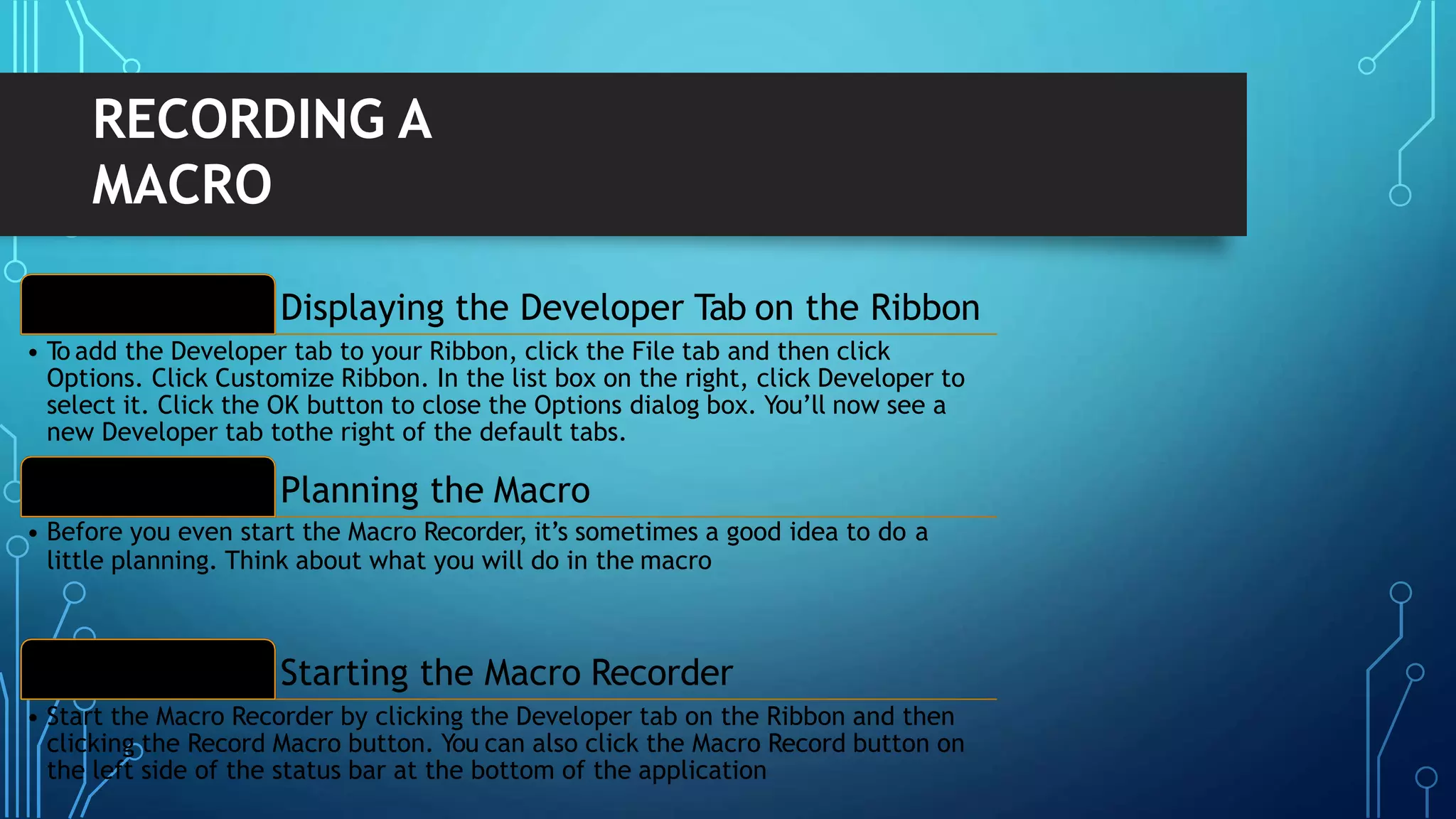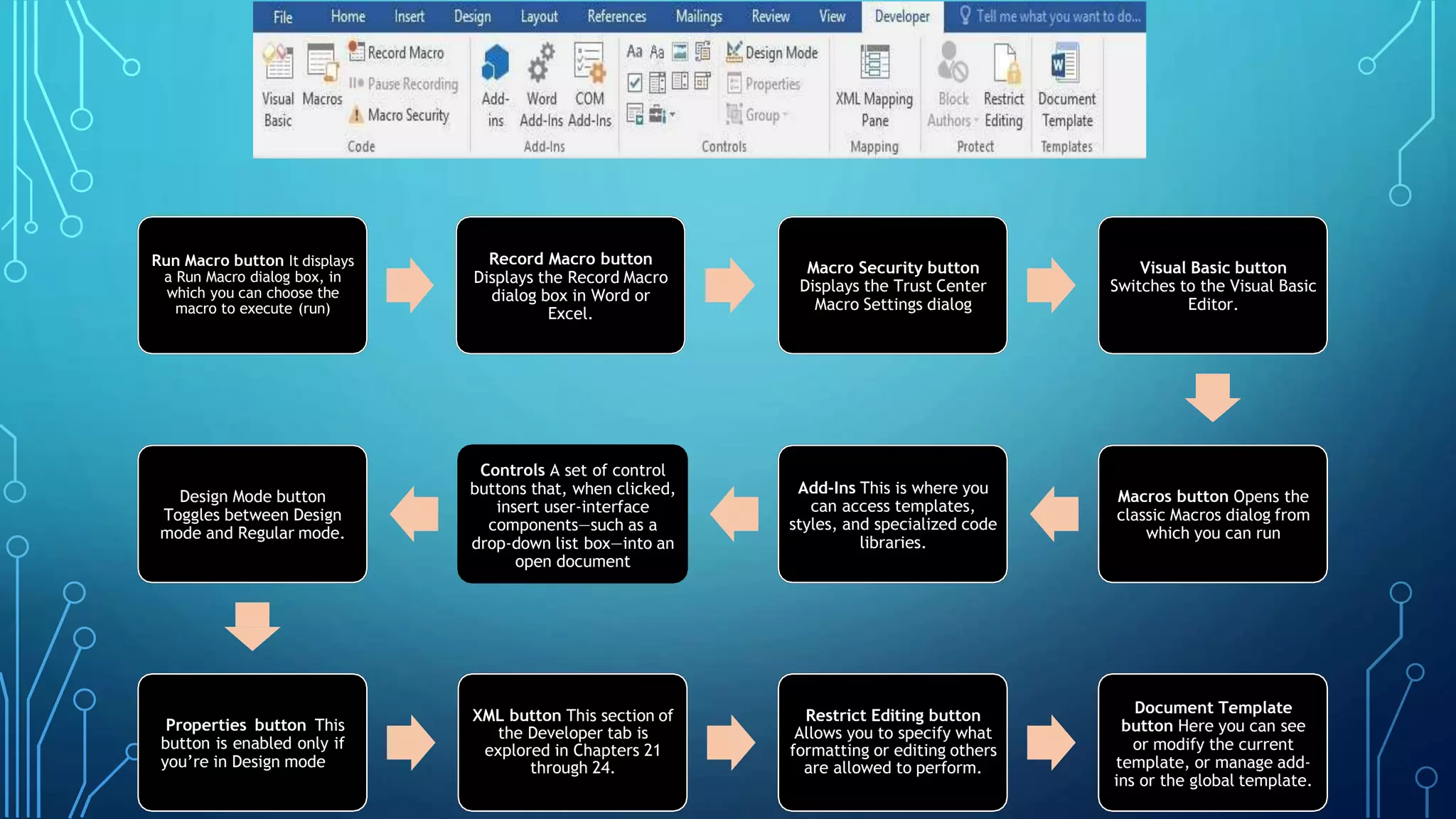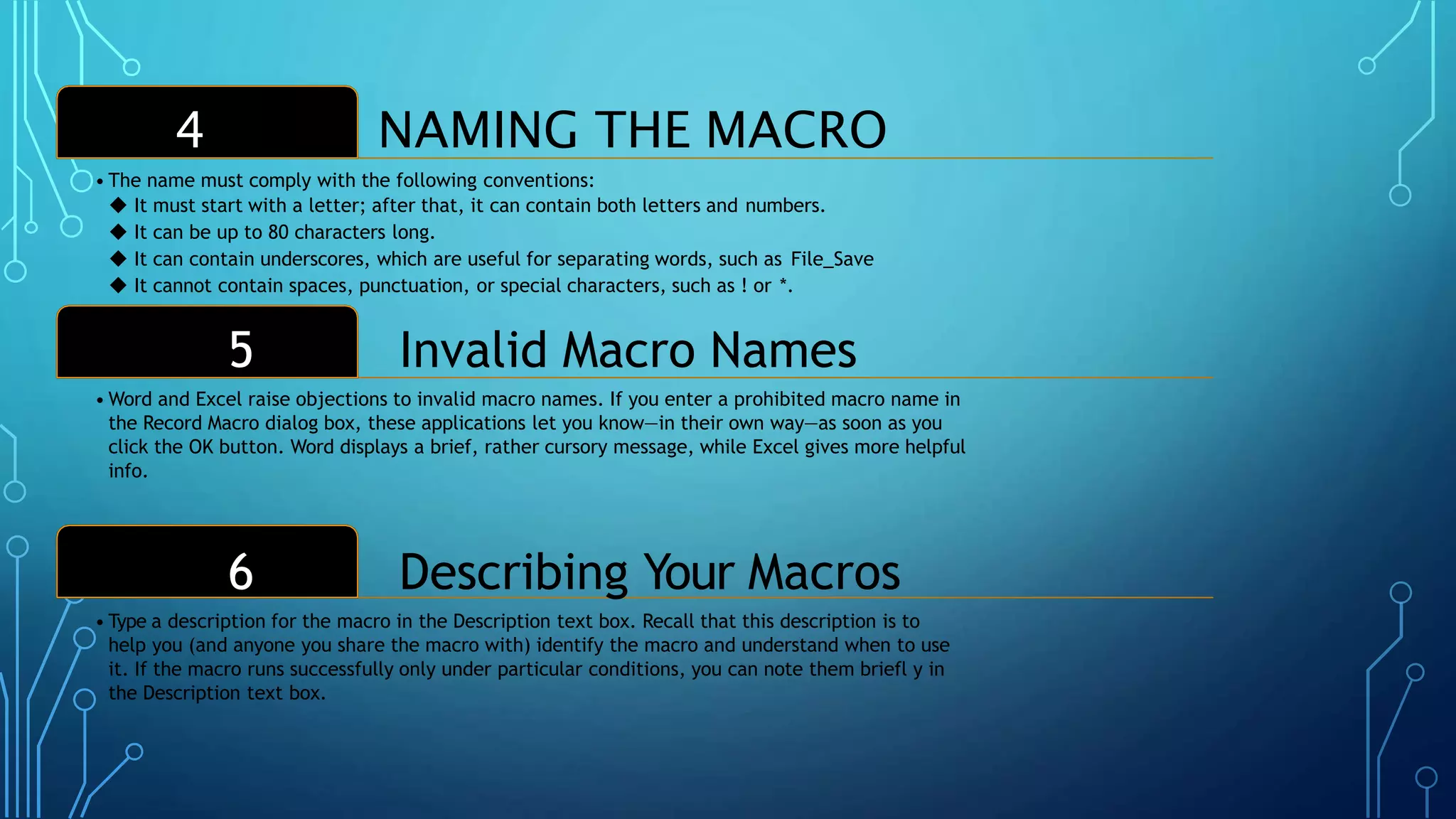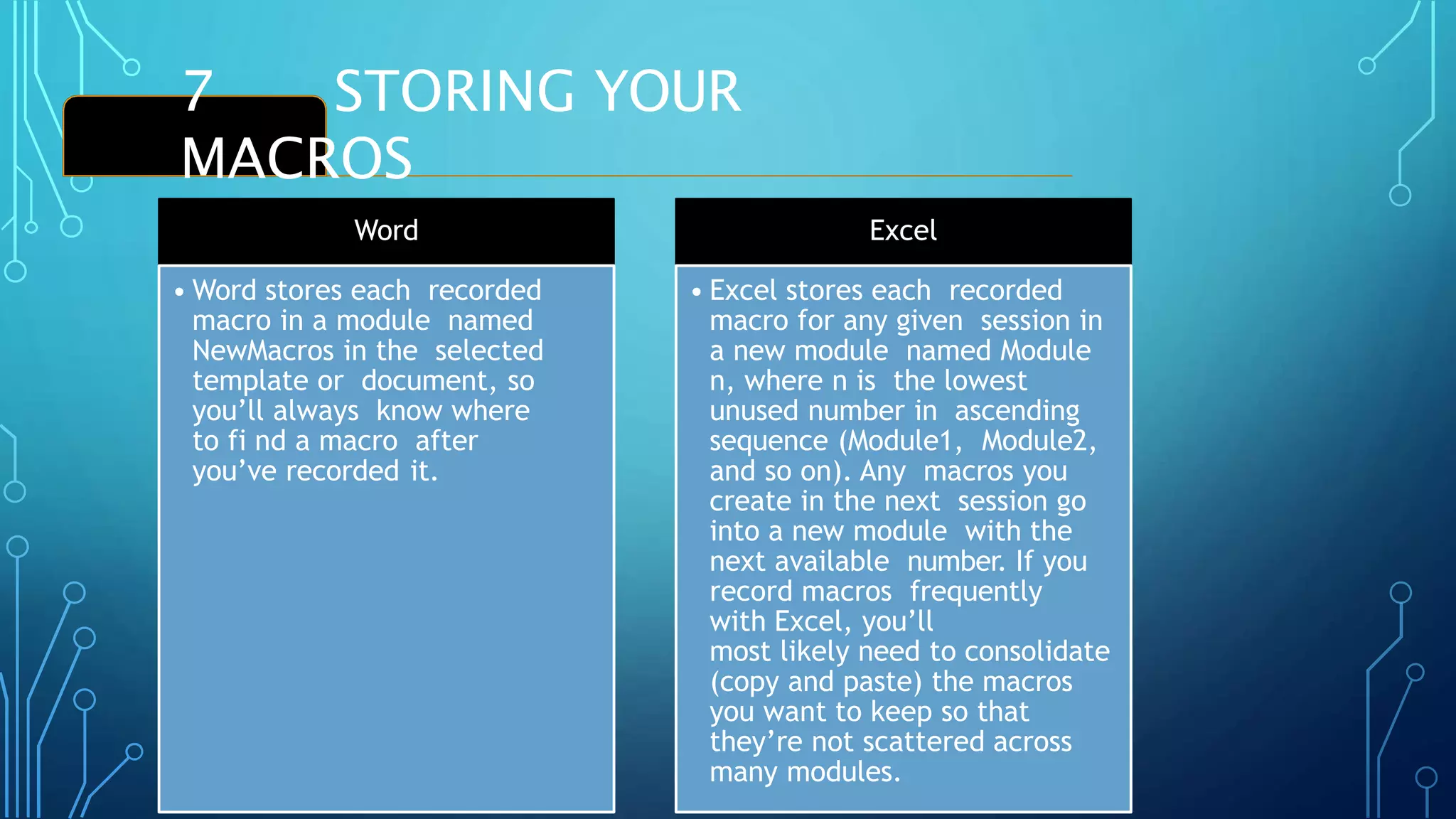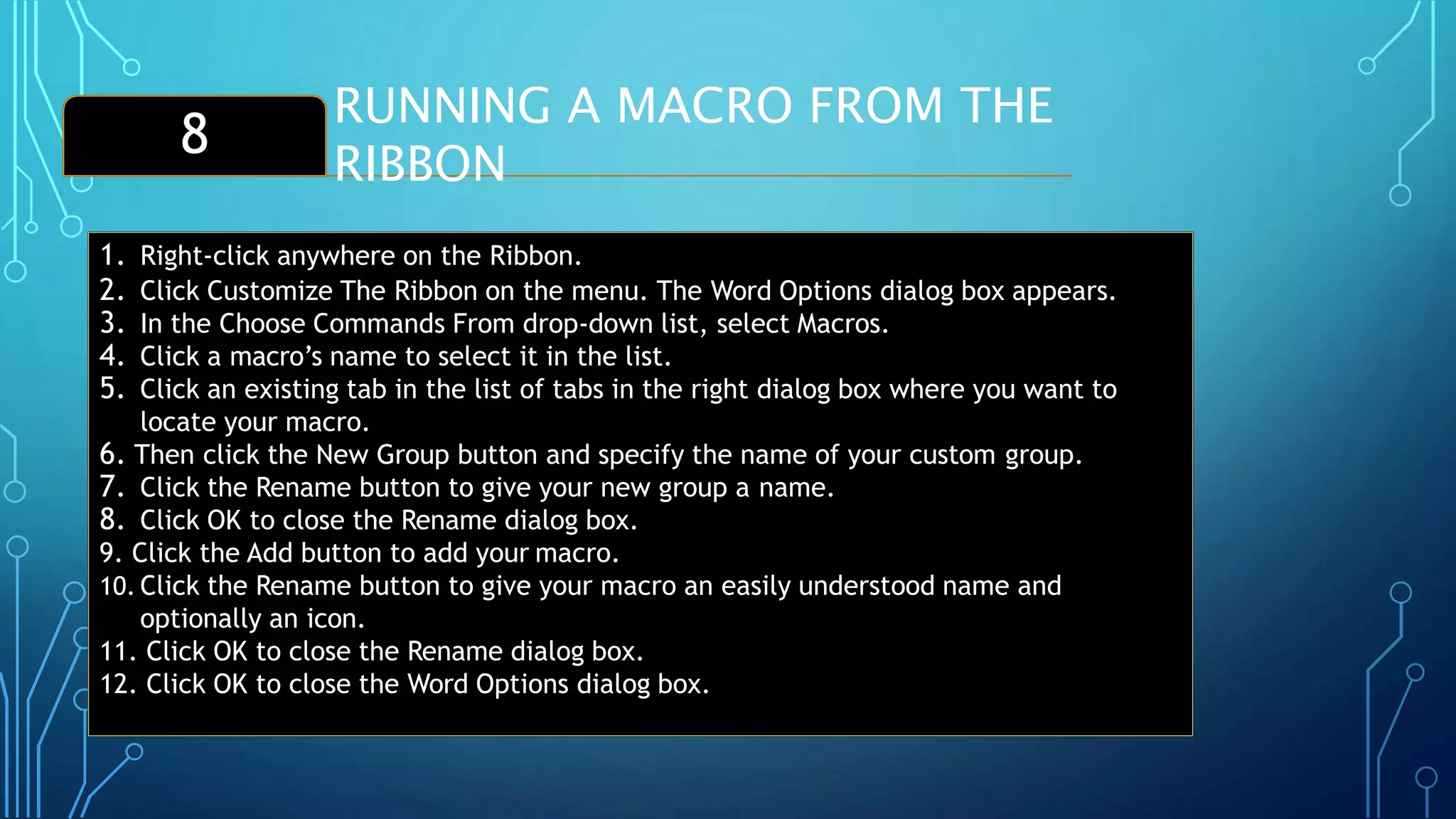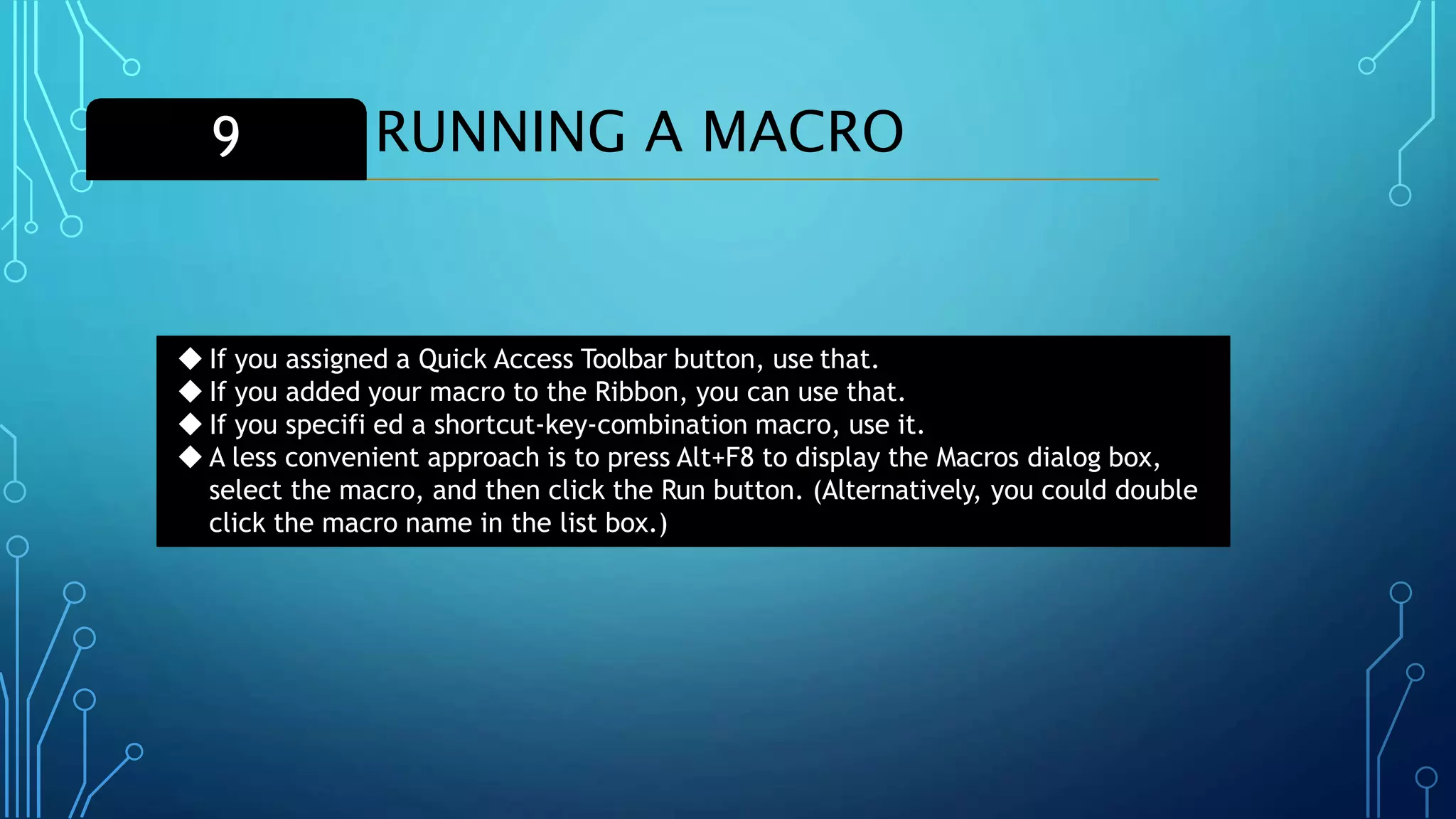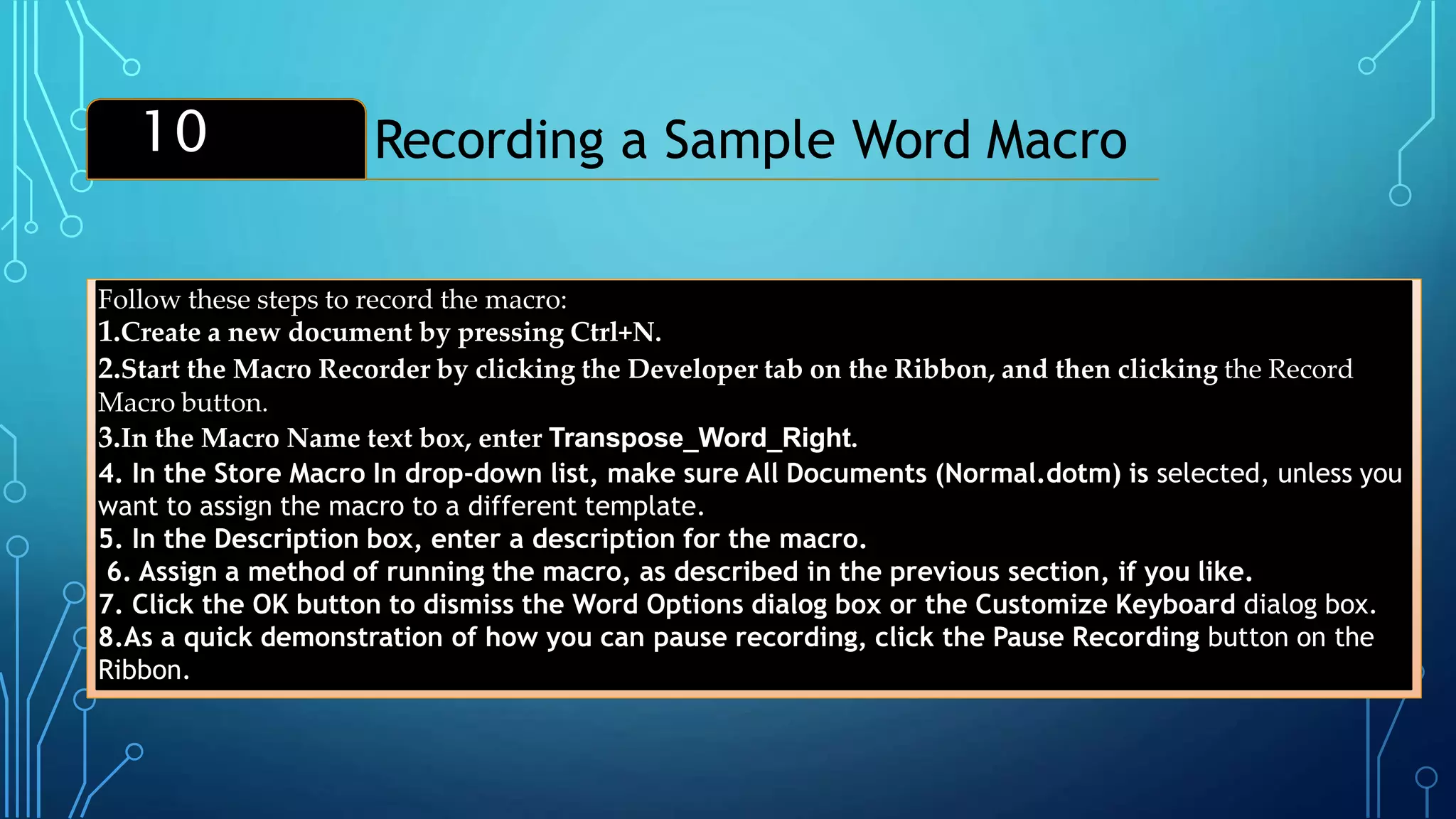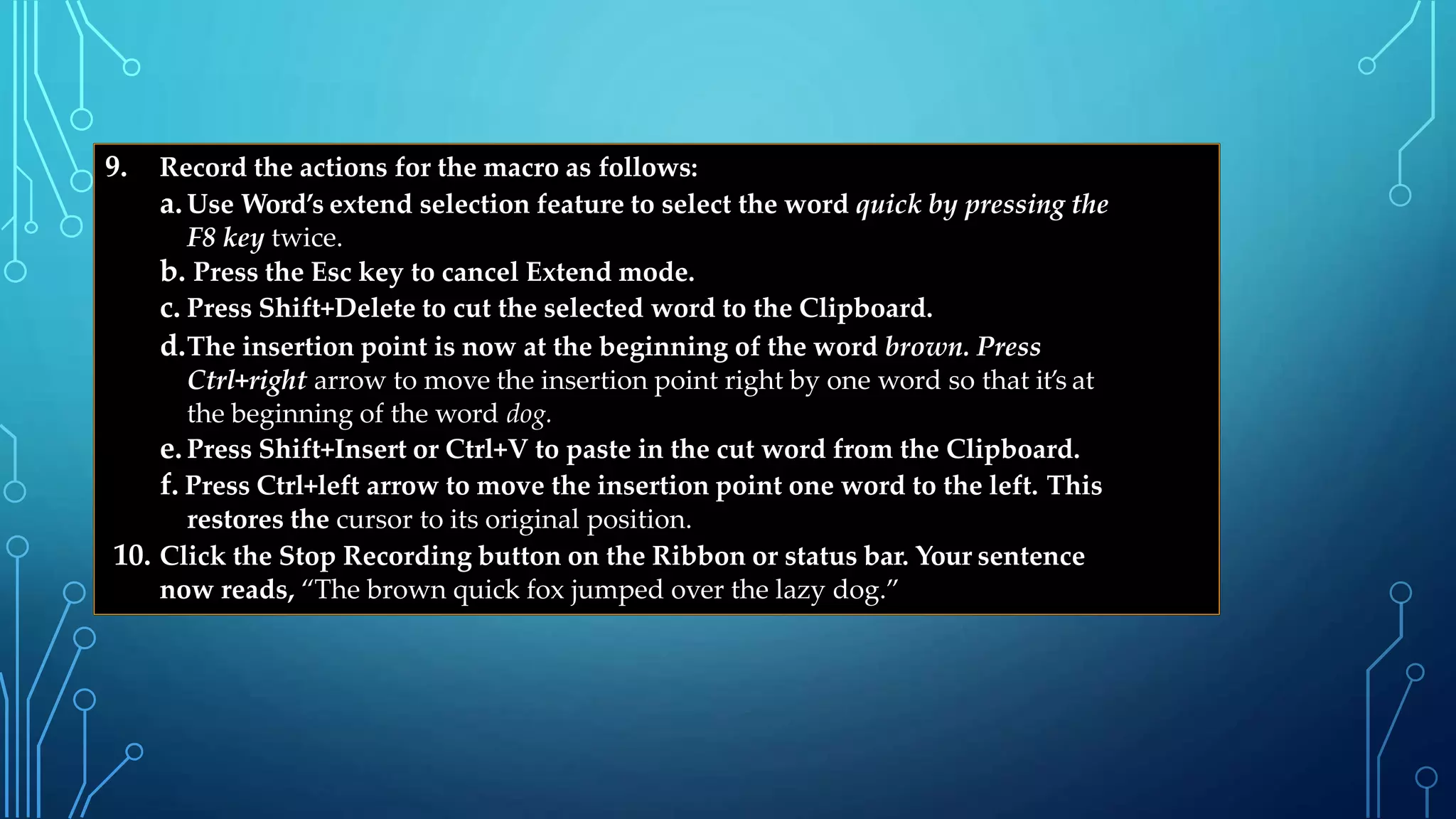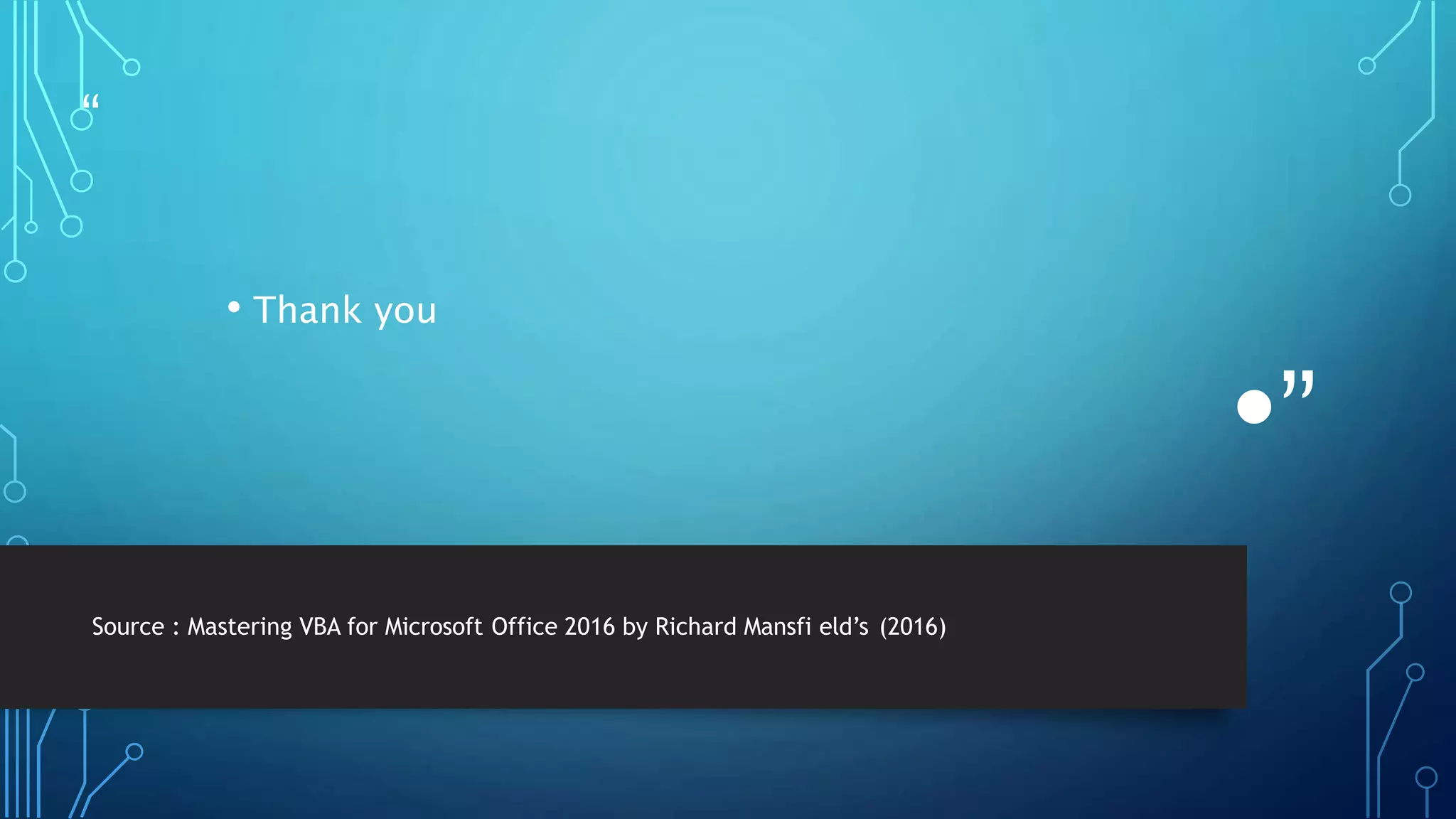The document discusses Visual Basic for Applications (VBA) and how to record macros in Microsoft Office applications like Word and Excel. It provides step-by-step instructions on how to record a simple macro that transposes a word in Word and a macro that adds months to a date range in Excel. Key points covered include starting and stopping the macro recorder, naming and storing macros, and running macros via the Ribbon or keyboard shortcuts.
